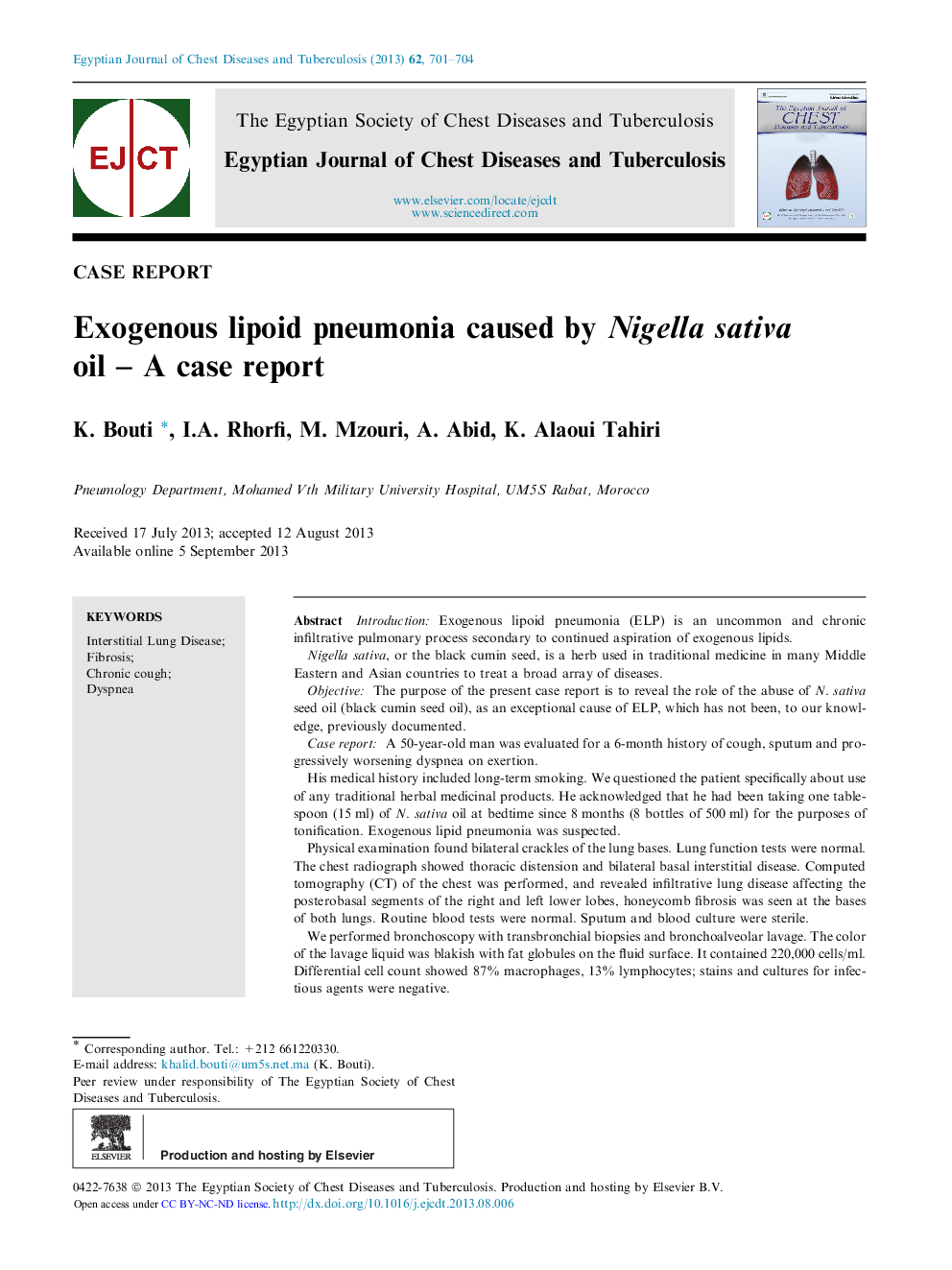| Article ID | Journal | Published Year | Pages | File Type |
|---|---|---|---|---|
| 3400434 | Egyptian Journal of Chest Diseases and Tuberculosis | 2013 | 4 Pages |
IntroductionExogenous lipoid pneumonia (ELP) is an uncommon and chronic infiltrative pulmonary process secondary to continued aspiration of exogenous lipids.Nigella sativa, or the black cumin seed, is a herb used in traditional medicine in many Middle Eastern and Asian countries to treat a broad array of diseases.ObjectiveThe purpose of the present case report is to reveal the role of the abuse of N. sativa seed oil (black cumin seed oil), as an exceptional cause of ELP, which has not been, to our knowledge, previously documented.Case reportA 50-year-old man was evaluated for a 6-month history of cough, sputum and progressively worsening dyspnea on exertion.His medical history included long-term smoking. We questioned the patient specifically about use of any traditional herbal medicinal products. He acknowledged that he had been taking one tablespoon (15 ml) of N. sativa oil at bedtime since 8 months (8 bottles of 500 ml) for the purposes of tonification. Exogenous lipid pneumonia was suspected.Physical examination found bilateral crackles of the lung bases. Lung function tests were normal. The chest radiograph showed thoracic distension and bilateral basal interstitial disease. Computed tomography (CT) of the chest was performed, and revealed infiltrative lung disease affecting the posterobasal segments of the right and left lower lobes, honeycomb fibrosis was seen at the bases of both lungs. Routine blood tests were normal. Sputum and blood culture were sterile.We performed bronchoscopy with transbronchial biopsies and bronchoalveolar lavage. The color of the lavage liquid was blakish with fat globules on the fluid surface. It contained 220,000 cells/ml. Differential cell count showed 87% macrophages, 13% lymphocytes; stains and cultures for infectious agents were negative.The patient was advised to stop taking N. sativa oil. The only treatment that was instituted was N-acetylcysteine. A clinically significant change in symptoms and chest radiograph was observed. The patient has remained stable 18 months after the diagnosis.
